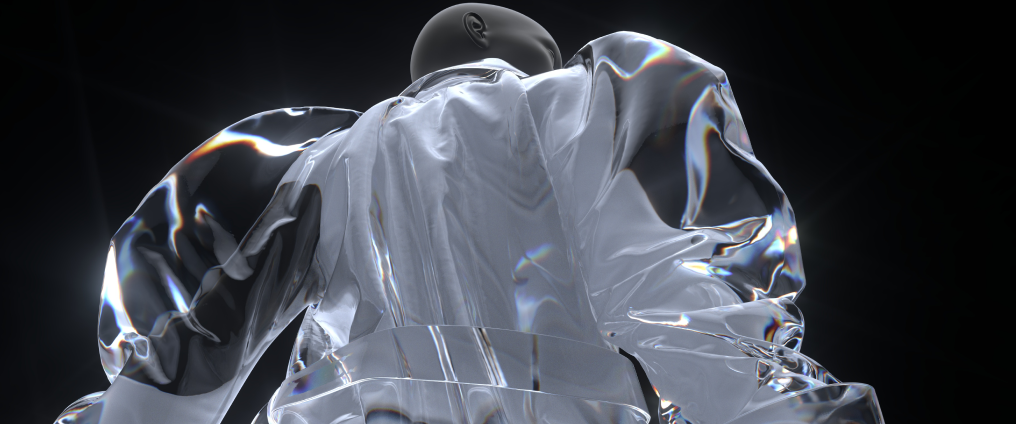
“I believe, to change the toxic environmental and cultural aspects of fashion we need to change the experience. Digital-only fashion provides many new opportunities to do so.”
“Clothing has two functions, protection and expression, but what if you take those two apart? I see a future where we will all wear our digital identity around us, where we will be able to curate that space. Endlessly expressing yourself, but then without the impact on the planet.”
Amber Jae Slooten, Co-founder, Creative Director
What they do
The Fabricant is a digital-only fashion house, fusing fashion and technology as part of a new sector of the fashion industry. Through digital fashion, they aim to show the world that clothing does not need to be physical to exist. This reimagination of the industry creates unlimited new possibilities while drastically reducing environmental impacts.
Why is it an example of the circular economy?
Digital fashion by design produces no waste or pollution from the manufacturing or after-use management of garments as they only ever exist in digital space. The digital fashion pieces can exist forever and be bought and traded between people without compromising quality. The business model aims to decouple revenue from the sale of physical items.
Where the collections or pieces also have physical items, waste is reduced by using data about demand and interest levels gathered during the digital-only online premier and advertising. This reduces over-production and the unique experience can create a more emotional connection to the items, increasing their lifetime.
What are the benefits?
Brands can reduce their carbon footprint during the design and development stages by 30% if they use digital samples rather than physical ones.
Similarly, the Life Cycle Assessment (LCA) report of a single t-shirt found a digital t-shirt:
Reduces water consumption from an average of 683 litres to none.
Reduces environmental pollution from toxic chemicals (dichlorobenzene) from 12,300kg to 0.692kg.
Reduces CO2 emissions from 7.8kg of CO2 to 0.26kg
Digital try-ons in e-commerce have the potential for customers to see items on ‘themselves’ (their ‘digital double’) before buying, minimising returns for brands. This would further reduce the environmental impact from extra transportation of goods to and from the customer as well as processing the returns.
The visual try-on experience has also been trialled on their own platform. Customers, who 80% of the time did not have 3D software knowledge, were able to interact with the experience of wearing digital clothing and create social media content such as Instagram posts. It can also be used in gaming where users can customise the wardrobe for their virtual avatar.
There is the opportunity to work with brands in visualisation projects and digital launches, while mitigating carbon emissions associated with traditional film shoots. The Fabricant has worked with Napapijri and Soorty on projects of this kind, creating runways and launches exclusively in digital space, complementing the steps these companies have taken towards sustainability.
How it works in detail
The digital world is becoming equally important as the physical world for self-expression and individuality. The Fabricant aims to aid just that, self expression. In so doing, it seeks to create an emotional connection to fashion in digital space, while dramatically reducing the harmful impact of the current fashion industry.
Digital fashion works by the user taking a picture of their face which is mapped with bodies which the user can choose. This can be done in an inclusive way, for example with the option of gender neutrality. Then a photo or video is captured with the chosen outfit. The Fabricant are also working towards the concept of ‘phygital’, an experience converging physical and digital. Through their projects, The Fabricant operates on transparency and a collaborative creative process, with a weekly digital atelier where anyone can join, download the 3D pattern file, and work alongside them.
The three main work streams include:
Design for prototyping
Marketing
Virtual try-on for customers
The Fabricant are realising these through different projects and partnerships with brands. Dapper Labs x The Fabricant created Iridescence, a one-of-a-kind digital outfit that is traceable, tradeable, and a collectible piece of art, but can’t be counterfeited due to blockchain technology. The outfit sold for USD 9,500 at auction, and is perfectly tailored to the winner in the digital realm. Iridescence illustrates the potential of digital-only couture and signifies the progress being made towards creating an emotional impetus around digital fashion that can begin to move people away from the normative ways of traditional fashion retail.
Through the use of digital technology, The Fabricant has worked with Tommy Hilfiger to create an engaging narrative and product visualisation that is more appealing to the customer, while allowing internal teams to gain insights into demand and interest without a physical product ever being created. This reduces over-stocking and production of unpopular items, as well as eliminating the creation of product samples and shooting them for sale. A similar project with I.T Hong Kong, a luxury fashion retailer, continued to push the boundaries with a 60 second film displaying the entire collection, including brands such as Alexander McQueen, Marques Almida, and Helmut Lang in a digital-only format that was shown at pop-up stores where customers could order from screens and have the physical garments sent directly to them.
The company is also in the gaming market, with games such as Fortnite, where players have personalisable wardrobes, meeting the demand for self expression in this realm. They have also created their own platform for people to create an avatar, add clothes, and share it on their channels.
Published 23 November 2021






